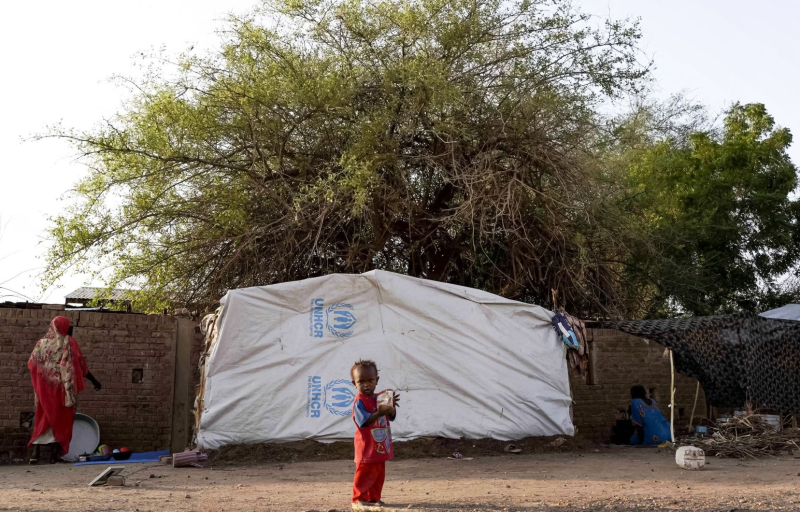
Photo: Agence France-Presse A child stands in front of a tent at Hasahisa Secondary School, which has been turned into a makeshift camp to house people fleeing violence in war-torn Sudan, on July 10, 2023.
Nina Larson – Agence France-Presse in Geneva
Published yesterday at 9:29 AM
- Africa
Conflict, violence and natural disasters in Africa have dramatically increased the number of people forced to flee their homes, bringing the number of internally displaced people (IDPs) to 35 million by the end of last year, according to an international monitoring group.
African internally displaced people (IDPs) alone accounted for nearly half of all those forced to flee their homes worldwide to seek refuge elsewhere in their countries, Alexandra Bilak, director of the Internal Displacement Monitoring Centre (IDMC), told AFP.
“We have seen a tripling of the number of IDPs on the African continent over the last 15 years,” she said, adding that “the majority of these internal displacements are caused by conflict and violence, but are increasingly also triggered by disasters.” natural.
While IDPs typically receive less attention than refugees seeking safety in another country, they are far more numerous and their lives are just as disrupted.
Displacement disrupts the livelihoods, cultural identity and social ties of entire communities, making them more vulnerable, the IDMC said in a report released on Tuesday.
200% Deposit Bonus up to €3,000 180% First Deposit Bonus up to $20,000Displacement can also disrupt a country’s development agenda by preventing displaced people from generating income, paying rent or taxes, while local or national authorities must provide additional housing, health care, education and protection. All of which generate additional costs.
See also
- More than 700,000 internally displaced in Haiti
- Climate change adds to 'hellish' situation for refugees, UN says
“New waves of violence”
The report shows that increasing levels of conflict and violence are responsible for the internal displacement of 32.5 million people in Africa. Eighty percent of them have been displaced across five countries—the Democratic Republic of Congo, Ethiopia, Nigeria, Somalia and Sudan.
Conflict and violence “cause cyclical patterns of displacement, and people who were displaced by conflict 10, 15, in some cases 20, 25 years ago have not been able to find a solution,” says Bilak.
“They have not been able to return home,” notes the director, adding that “new waves of violence and displacement are adding to protracted cases,” pushing the number of internally displaced people ever higher.
Displacement due to natural disasters, particularly floods, is also on the rise in Africa, as climate change increasingly takes its toll.
The number of times people were forced to flee disasters increased sixfold between 2009 and 2023, increasing from 1.1 million trips per year to 6.3 million, according to the IDMC.
Floods triggered more than three-quarters of these movements, while droughts accounted for another 11%, the report said.
Overlap
In addition, conflict, violence and natural disasters often overlap, creating complex crises that see many people displaced repeatedly or for prolonged periods, IDMC said.
The organization points to the African Union’s Kampala Convention for the Protection and Assistance of Internally Displaced Persons as an important tool in addressing the problem.
The convention, adopted in 2009 and entered into force in December 2012, set an international standard as the first, and still only, legally binding regional agreement on internal displacement.
Thirty-four African countries have since ratified the treaty, and many have put in place legal frameworks and made significant investments to address the problem. But governments are struggling to cope.
For Ms. Bilak, “the key to the problem” is “doing much more in terms of peacebuilding, diplomacy and conflict transformation.”

